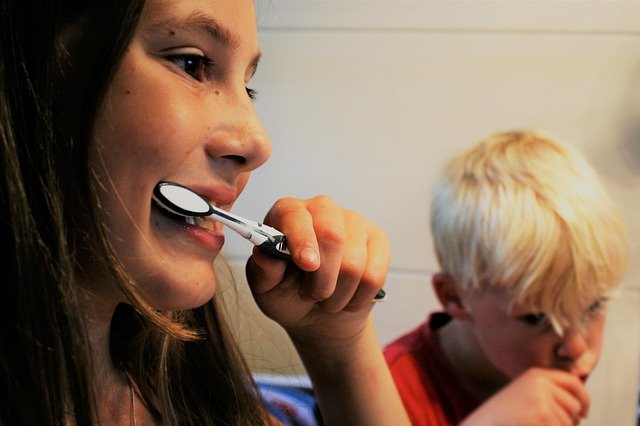Designing Safe Indoor Spaces for Young Children in Group Settings
Thoughtful indoor design supports young children's development while reducing hazards and maintaining consistent routines. This article outlines practical approaches to arranging group childcare environments that balance safety, play-based learning, nutrition, and staff training so caregivers and families can understand effective layouts and protocols.

Creating indoor spaces for groups of young children involves careful planning that balances safety with opportunities for exploration. A well-designed room considers clear circulation paths, sightlines for supervision, and predictable routines so caregivers can support child development while minimizing risks. Good layouts also promote family engagement and consistent scheduling, helping children settle and learn. This overview highlights practical strategies that integrate play-based learning, nutrition considerations, sanitation practices, and staff training to make group settings both secure and developmentally rich.
How does childcare layout impact safety?
Layout choices directly affect supervision and injury prevention in childcare settings. Position activity zones so caregivers have unobstructed sightlines to children, with low shelving and open storage that reduce hiding places and allow quick access to materials. Use non-slip flooring and clear walking paths to prevent falls, and separate high-activity gross motor areas from quiet corners to lower collision risk. Secure heavy furniture to walls and store cleaning supplies and medications out of reach. Thoughtful placement of exits and emergency routes, along with visible signage, supports rapid response while preserving an inviting environment for play and learning.
How can early education and play-based learning fit spaces?
Early education benefits from areas that invite hands-on exploration and social interaction. Divide rooms into intentional zones for blocks, sensory play, dramatic play, and reading, using low partitions or rugs to define spaces without blocking supervision. Choose open-ended materials that encourage creativity and rotate resources to sustain interest while keeping clutter manageable. Arrange small-group tables near caregiver workspaces for guided activities and assessment. Natural light, varied textures, and accessible storage support engagement, while durable, easy-to-clean materials maintain safety and hygiene standards during play-based learning.
What routines, scheduling, and nutrition support wellbeing?
Clear routines and thoughtful scheduling reduce stress and support consistent supervision. Plan daily rhythms for arrival, meals, naps, and outdoor time so staffing remains predictable and transitions are smooth. Meal areas should be distinct from active play zones and furnished with easily sanitized surfaces; seating must be age-appropriate to reduce choking and falling hazards. Communicate nutrition policies and allergy protocols with families, and allow time for handwashing before meals. Regularly scheduled clean-up periods and quiet moments also reinforce routines that help children feel secure and ready to learn.
How do staff training and caregiver practices reduce risks?
Regular staff training equips caregivers with the skills to maintain a safe, developmentally supportive environment. Training topics should include emergency response, safe sleep practices, sanitation procedures, and recognizing developmental milestones. Caregivers trained in behavior guidance can foster social skills and de-escalate conflicts, while those versed in inclusive strategies adapt activities for diverse learners. Ongoing professional development encourages consistent application of policies and helps teams adjust classroom layouts, rotate materials, or modify schedules based on observed needs, maintaining both safety and quality of care.
What health protocols and sanitation measures are essential?
Robust health protocols help limit illness spread and keep children healthy. Establish routines for handwashing at key times, disinfecting high-touch surfaces, and laundering bedding and soft toys on a regular schedule. Maintain separate areas for diapering and toileting with clear procedures for disposal and cleaning, and ensure ventilation meets local guidance. Have policies for managing mildly ill children and clear communication plans with families. This article is for informational purposes only and should not be considered medical advice. Please consult a qualified healthcare professional for personalized guidance and treatment.
How to foster social skills and gross motor development indoors?
Indoor environments can intentionally support social skills and gross motor growth through layout and activity choices. Provide open floor space for movement games, low climbing structures with soft landings, and obstacle courses that build balance and coordination. Create small-group work areas and cooperative play stations to practice turn-taking, language, and conflict resolution. Visual schedules and consistent routines help children anticipate transitions and practice self-regulation. Caregivers who scaffold interactions, model communication, and adapt challenges to individual levels can help each child progress in both social and motor domains.
Designing safe indoor spaces for young children in group settings requires a blend of practical safety measures and opportunities for meaningful learning. Prioritizing visibility, predictable routines, sanitation, and ongoing staff training creates environments that support nutrition, play-based learning, and holistic child development. Regular review of procedures and coordination with families will keep spaces responsive to changing needs and promote consistent wellbeing for children in group care.






